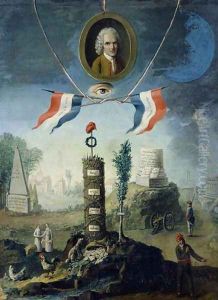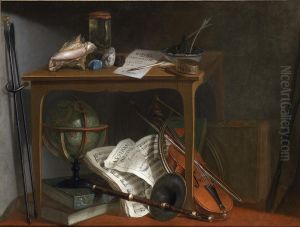Nicolas Henri Jeaurat de Bertry Paintings
Nicolas Henri Jeaurat de Bertry was a French painter who was born on December 14, 1728, in Vermenton, a small town in Burgundy, France. He was part of an extensive family of painters, being the nephew of the more famous Étienne Jeaurat, a well-known painter of his time. Nicolas Henri was thus introduced to the arts at an early age. His early training and influences came within this family environment, which was steeped in artistic tradition.
Despite coming from a family of artists, Nicolas Henri Jeaurat de Bertry did not achieve the same level of fame as his uncle. Nonetheless, he worked within the Rococo style that was prevalent in France during the 18th century. This style was characterized by lightness, elegance, and an exuberant use of curving, natural forms in ornamentation. Jeaurat de Bertry's works often included religious themes, a common subject for the period, and he was known to have produced several paintings for churches in the Burgundy region.
During his career, Jeaurat de Bertry became a member of the Académie Royale de Peinture et de Sculpture, the premier art institution in France before the French Revolution. His membership in the Academy is a testament to his recognition and the respect he garnered among his contemporaries. However, much of his life’s work has not been well-documented, and as a result, he remains a relatively obscure figure within the history of French art.
Nicolas Henri Jeaurat de Bertry passed away on May 29, 1796, in France. His death marked the end of a modest career overshadowed by the more prominent members of his family and the luminaries of French art of the 18th century. Though his works may not have garnered the acclaim or historical significance of those by other artists of his time, his contributions to French painting and his role in perpetuating the family tradition of art are part of the rich tapestry of the Rococo movement.

